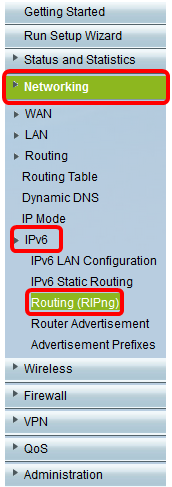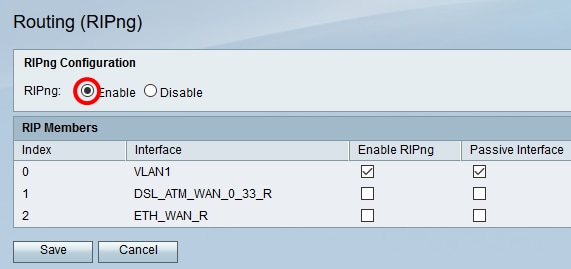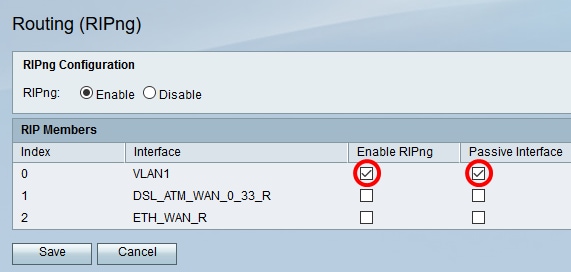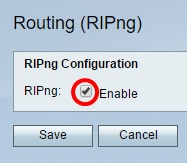Enable Router Information Protocol Next Generation (RIPng) on an RV Series Router
Available Languages
Objective
Router Information Protocol Next Generation (RIPng) is a routing protocol based on the distance vector (D-V) algorithm. Like Routing Information Protocol (RIP), its predecessor, RIPng uses hop count to measure the distance to a destination. The hop count from a router to a directly connected network is 0. The hop count between two directly connected routers is 1. When the hop count is greater than or equal to 16, the destination network host is considered unreachable. RIPng is typically used for Internet Protocol version 6 (IPv6) networking, while RIP is used for IPv4. Ease of configuration is the main benefit of RIPng. On your device, RIPng is disabled by default.
This article aims to show you how to enable RIPng on RV Series Routers that support IPv6. It does not apply to devices that do not support IPv6.
Applicable Devices
- RV Series — RV130, RV130W, RV132W, RV134W
Software Version
- 1.0.3.16 — RV130, RV130W
- 1.0.0.17 — RV132W
- 1.0.0.21 — RV134W
Enable RIPng
Step 1. Log in to the web-based utility of the router and choose Networking > IPv6 > Routing (RIPng).
Note: The images on this article were taken from the RV134W VDSL2 router. Options may vary depending the model of your device.

Step 2. Click the Enable radio button to activate RIPng.

Step 3. In the RIP Members table of the RV132W/RV134W, choose the Index and Interface from the list and check the corresponding check box for Enable RIPng and Passive Interface.
Note: In this example, RIPng is enabled for VLAN 1 on the RV132W/RV134W. It is also configured as a Passive Interface meaning, it would not send routing updates. This would lower bandwidth usage, resources, and reduce security risks.

Note: Choosing RIP Members, as shown below, is not available on the RV130 and RV130W router. You can only enable RIPng on the RV130W and RV130 by checking the check box, and disable the feature by unchecking it. In this example, RIPng is enabled.

Step 4. Click Save.

You should now have enabled RIPng on your RV Series router.
Revision History
| Revision | Publish Date | Comments |
|---|---|---|
1.0 |
12-Dec-2018 |
Initial Release |
 Feedback
Feedback